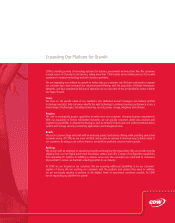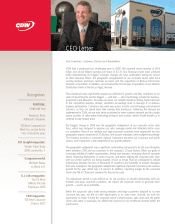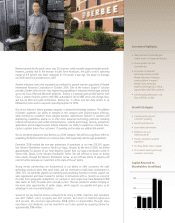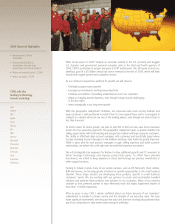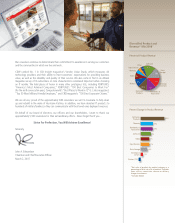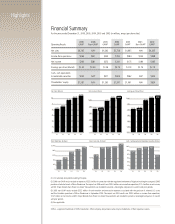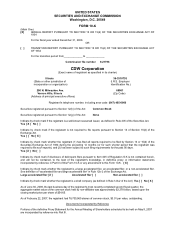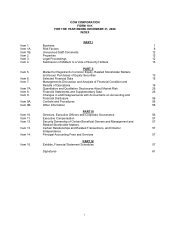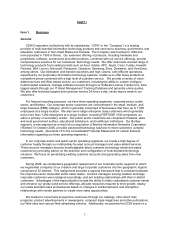CDW 2006 Annual Report Download - page 11
Download and view the complete annual report
Please find page 11 of the 2006 CDW annual report below. You can navigate through the pages in the report by either clicking on the pages listed below, or by using the keyword search tool below to find specific information within the annual report.
1
PART I
Item 1. Business
General
CDW Corporation (collectively with its subsidiaries, “CDW” or the “Company”) is a leading
provider of multi-branded information technology products and services to business, government, and
education customers in the United States and Canada. The Company was founded in 1984 and
reincorporated in 1995 in Illinois. Our extensive offering of products, including hardware and
peripherals, software, accessories and other products, combined with our service offerings, provide
comprehensive solutions for our customers’ technology needs. We offer customers a broad range of
technology products from leading brands such as Acer, Adobe, APC, Apple, Cisco, Fujitsu, Hewlett-
Packard, IBM, Lenovo, Microsoft, Panasonic, Quantum, Samsung, Sony, Symantec, and ViewSonic,
among others. Our dedicated, well-trained coworkers and high volume, cost-efficient operations,
supported by our proprietary information technology systems, enable us to offer these products at
competitive prices combined with a high level of customer service. We provide a variety of value-
added services and Web-based tools to our customers, including the ability to custom configure
multi-branded solutions, manage software licenses through our Software License Tracker tool, track
tagged assets through our IT Asset Management Tracking Database and generate online quotes.
We also offer technical support and customer service 24 hours a day, seven days a week to our
customers.
For financial reporting purposes, we have three operating segments, corporate sector, public
sector, and Berbee. Our corporate sector customers are concentrated in the small, medium, and
large business (SMB) category, which is generally comprised of businesses that have up to 1,000
employees at a single location. We also serve larger enterprise class customers which generally
have more than 1,000 employees at a single location, including FORTUNE 1000 companies, as
either a primary or secondary vendor. Our public sector customers are comprised of federal, state
and local government entities, educational institutions, and healthcare institutions. Our Berbee
segment, a new segment as a result of our acquisition of Berbee Information Networks Corporation
(“Berbee”) in October 2006, provides advanced technology solutions to meet customers’ complex
technology needs. (See Note 16 to the Consolidated Financial Statements for certain financial
information regarding our three operating segments.)
In our corporate sector and public sector operating segments, we create a high degree of
customer loyalty through our relationship-focused account managers and value-added services.
These account managers become knowledgeable about customer technology needs and assist
customers by providing advice on the selection and configuration of multi-branded technology
solutions. We focus on penetrating existing customer accounts and generating sales from new
customers.
During 2006, we completed a geographic realignment of our corporate sector segment in which
we segmented a majority of our medium and large corporate customers into five geographic regions
comprised of 32 districts. This realignment provided a regional framework that is consistent between
the corporate sector and public sector sales teams. Account managers serving medium and large
corporate customers were realigned accordingly, and are building relationships with their in-district
customers. Advantages of the regionalization include the ability to better understand customer needs
and enhance our product and service offerings, allocate resources required to drive growth, deploy
our inside and field sales professionals based on changes in market demand, and strengthen
relationships with vendor partners to create more sales opportunities.
We market to current and prospective customers through our catalogs, other direct mail
programs, product advertisements in newspapers, computer trade magazines and other publications,
our Web sites and various Web advertising vehicles. Additionally, we promote the CDW brand on a



